Cannabis white ash: a flushing theory debunked

Some cannabis connoisseurs firmly believe that one of the signs of quality grown weed is when a joint burn produces only white ash. Conversely, they also believe that black-coloured cannabis ash is a sign of excess residual minerals, a sign of poor flushing perhaps? But are these beliefs true, or is the desirability of cannabis white ash merely a myth with limited foundation in science?
| Summary: | |
| ● | Cannabis white vs black ash facts and misconceptions |
| ● | Key factors influencing the colour of cannabis ash |
| ● | How to evaluate the quality of cannabis beyond ash colour |
| ● | Key takeaways |
Cannabis white vs black ash facts and misconceptions
Many assume that white ash is a sure sign that your cannabis was properly flushed, dried and cured. Black ash is therefore believed by many to be a sign of residual mineral nutrients including phosphates & nitrates along with any other “impurities”. It’s worth noting that the ‘NPK’ mineral nutrients (inorganic salts rich in Nitrogen, Potassium and Phosphorus) typically used to feed cannabis are typically white crystalline solids at room temperatures. Black ash is dark coloured because of residual carbon remaining after incomplete combustion. This could be caused by several factors, discussed below.
Key factors influencing the colour of cannabis ash
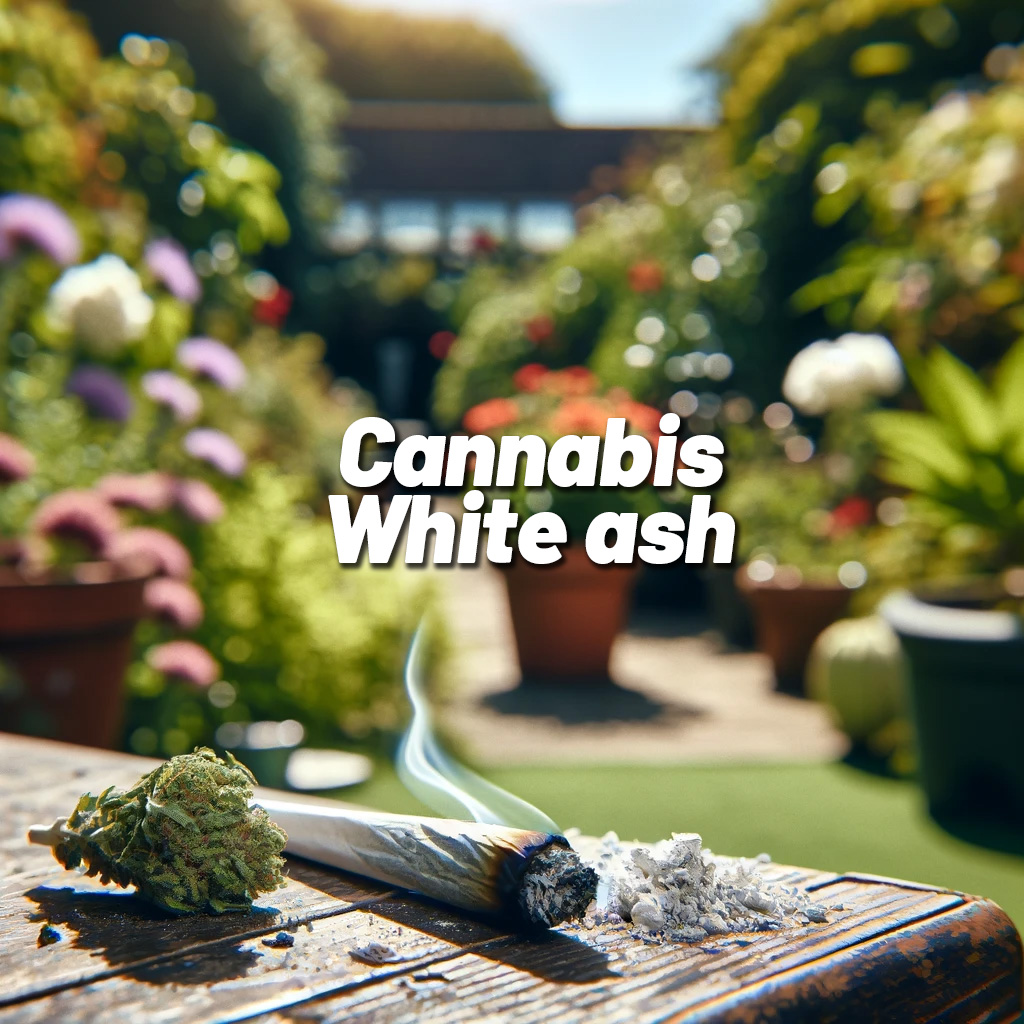
When the usual materials in a cannabis joint (ground weed with possible addition of tobacco, cannabis oil, concentrates & hash) are ignited they combine with atmospheric oxygen and burn. With complete combustion, all organic materials either evaporate (and are inhaled/) or they are burnt, oxidising into an array of organic compounds and CO2. Some of these are inhaled, the rest escapes as smoke and dissipates.
The remnants of efficient, complete combustion are typically inorganic (i.e. carbon-free) remains that are carbon-free and therefore a natural white (or white/light-grey) colour. But note that ash from any cannabis joint will contain non-combustible inorganic remains (nitrates, phosphates, carbonates, oxides of Sodium, Potassium, Calcium, Magnesium etc) even if you believe you have correctly flushed your plants. One point to be discussed later is whether flushing cannabis actually has any scientific merit at all.
If you have ever used an efficient log burning stove, you will notice that wooden logs burn leaving an often white/grey ash behind. This material is, as with cannabis, simply the inorganic remnants that are left once combustion is complete. Rich in useful minerals, ash from wood fires has traditionally been re-used as a natural soil fertiliser.
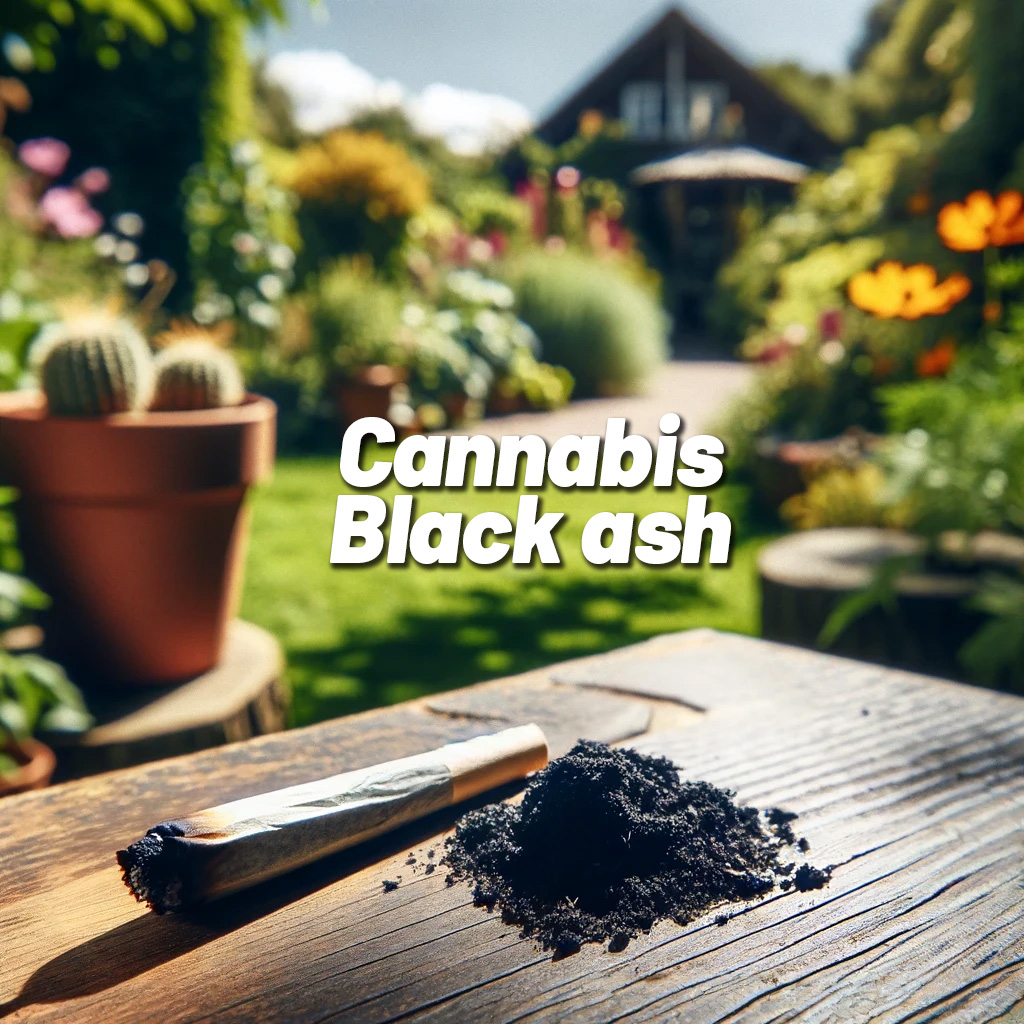
When combustion is incomplete more non-oxidised (or unburnt) black carbon is left leaving a visibly darker (black, dark grey) coloured ash. It doesn’t matter how well the weed was grown, flushed or cured. If combustion of the joint ingredients is incomplete, for whatever reason, you will have darker coloured ash.
Below are a few factors that are often thought to affect whether your weed burns leaving a white or black ash behind.
Resin levels in the cannabis buds
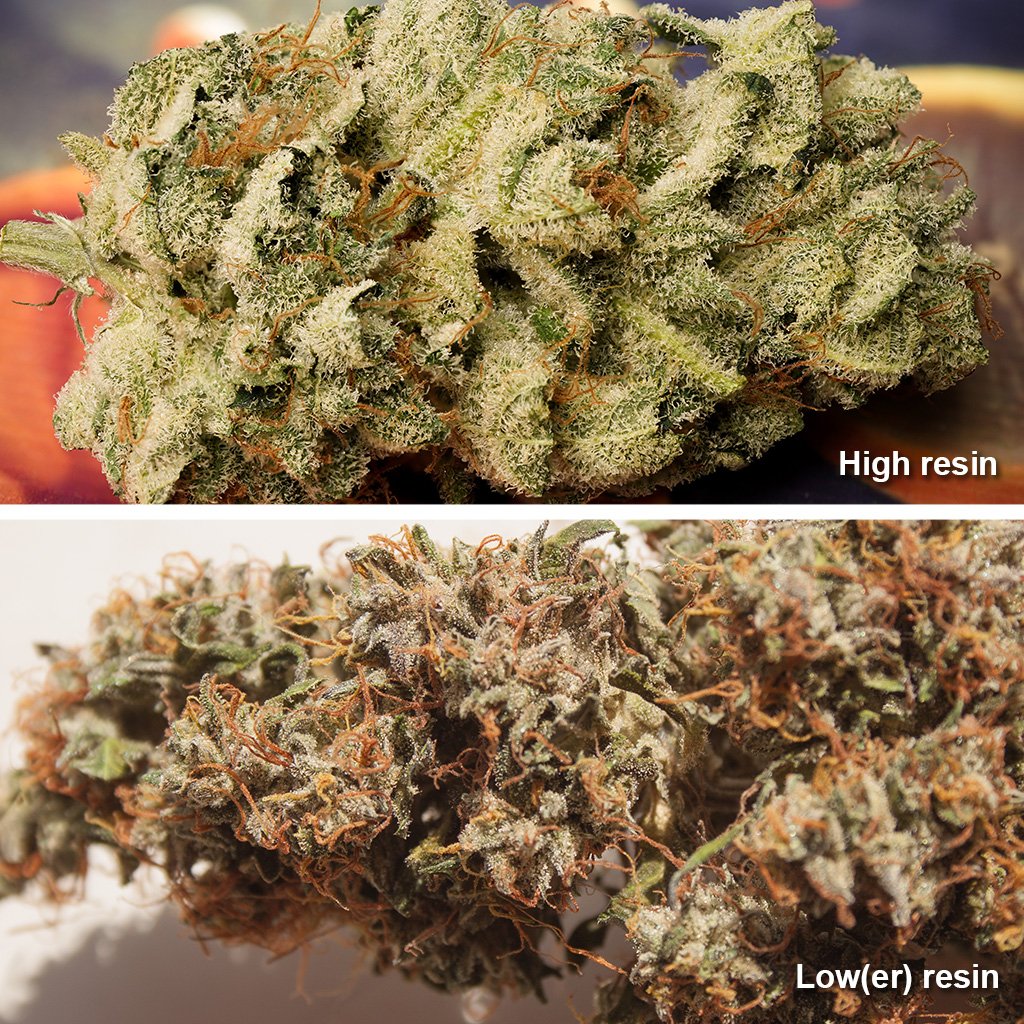
The best cannabis seeds will produce plants that exude far higher levels of resin than average. But whether you are growing genetics that will produce sticky buds with 25% THC levels or something not quite as potent you should still see cannabis trichomes on the leaves and buds.
Cannabis trichomes are the small sticky glands that contain THC (and other cannabinoids) as well as terpenes. These compounds are generally organic with low boiling points - meaning that they turn to volatile gases on contact with heat and are inhaled.
If you roll good joints that burn evenly (a key requirement for producing white ash) all the trichome material should completely combust/evaporate. If you roll joints that don’t burn particularly evenly then residual tar from the trichomes may stain the ash a darker colour.
Type and age of cannabis
Many believe that well cured and aged cannabis buds are more likely to burn leaving a white ash behind. One of the reasons behind this theory is that it allows time for the plant pigment chlorophyll to degrade - which is certainly true, and this does improve the taste.
For all connoisseurs, curing is the process that allows weed to mature allowing the buds to dry slowly and the fresh chlorophyll taste to diminish. Well cured buds may taste better but curing them doesn’t remove the inorganic salts/minerals which are the primary constituents of white ash. Freshly harvested, as well as expertly cured, cannabis buds can produce cannabis ash that is white or black.
Smoking method and burning temperature
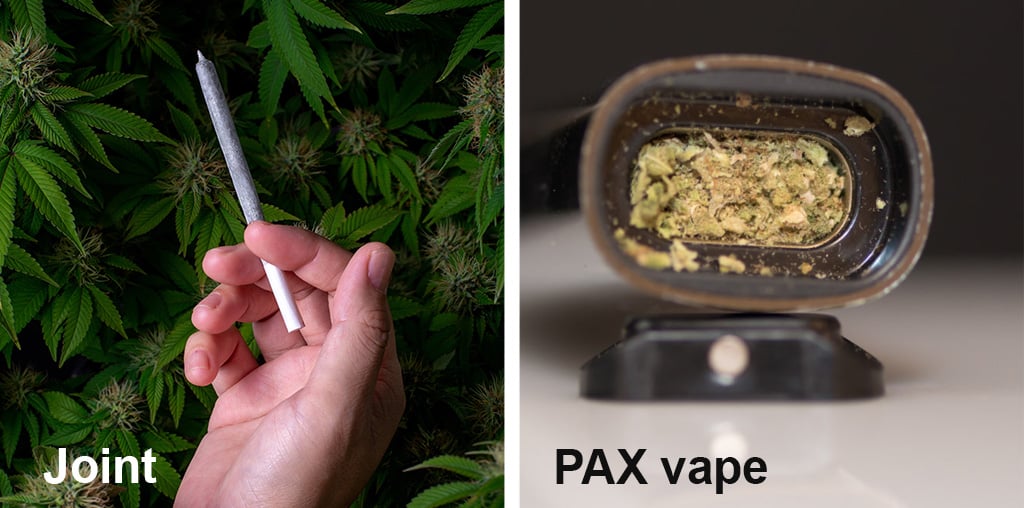
If you vape your buds, you always get a brown cellulose plant residue. All the volatile cannabinoid and terpenes are inhaled, and you are left with the dry remnants of the host plant.
If you light a joint, the combustion process ignites the organic plants materials. It is the efficiency of this combustion process that determines the colour of the ash.
A consistent burn with sufficient oxygen (therefore inferring higher joint temperatures) will oxidise any remaining carbon into CO2 or other volatile organics. An inconsistent burn down your joint will leave charred, blackened carbon-rich ash.
Whether you roll expert-joints that burn evenly all the way down or whether your joint-rolling technique leaves a little to be desired, the ash will always contain non-combustible inorganic matter. The more efficient the combustion process, the whiter your ash will be. If your joints burn down unevenly then the contents inside the joint receive inconsistent levels of heat therefore lending themselves towards blacker ash.
Curing process
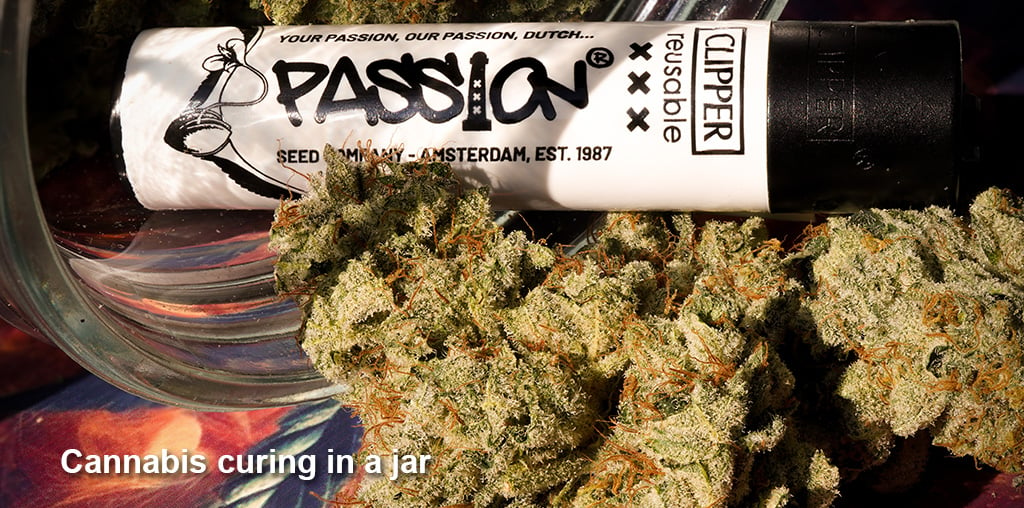
During cannabis curing any excess moisture evaporates from the buds until they reach the desired moisture content. Throughout this aging process the buds often fade from fresh-green to duller green/brown hues. Chlorophyll degradation is the reason for the colour change, which results in a better taste as the terpenes can better express their loud flavours.
But despite many counterclaims, cured buds are no more likely to burn with a whiter ash than uncured buds. They may taste and smell far superior, but it is the process/efficiency of combustion that determines how much carbon is left in the ash - and therefore what colour that ash will be.
What about tobacco ash?
Over the last 100 years the tobacco industry has also explored the topic of ash colour. Presence of Chlorides (not used as a primary constituent cannabis nutrient BTW) inhibits complete combustion, restricting the full depth of flavour and aroma. It is quite possible that cannabis aficionados noticed the same principle - when combustion is complete the taste/effects are better, and the ash colour is whiter.
Note that inorganic materials (typically low levels of Magnesium or Calcium salts) were often added (!) to cigars to promote a fine white ash colour. Many health-conscious cannabis users, mindful of the combustion concerns have chosen to bypass the debate simply by switching to a cannabis vaporiser.
For many, combustion feels like a riskier process compared to the relative simplicity of gently ‘toasting’ your buds (or nicotine/tobacco) via a vape which slowly releases the vapours without combustion and the various potentially harmful by-products.
Cannabis flushing for the win and the whitest ash…or is it?
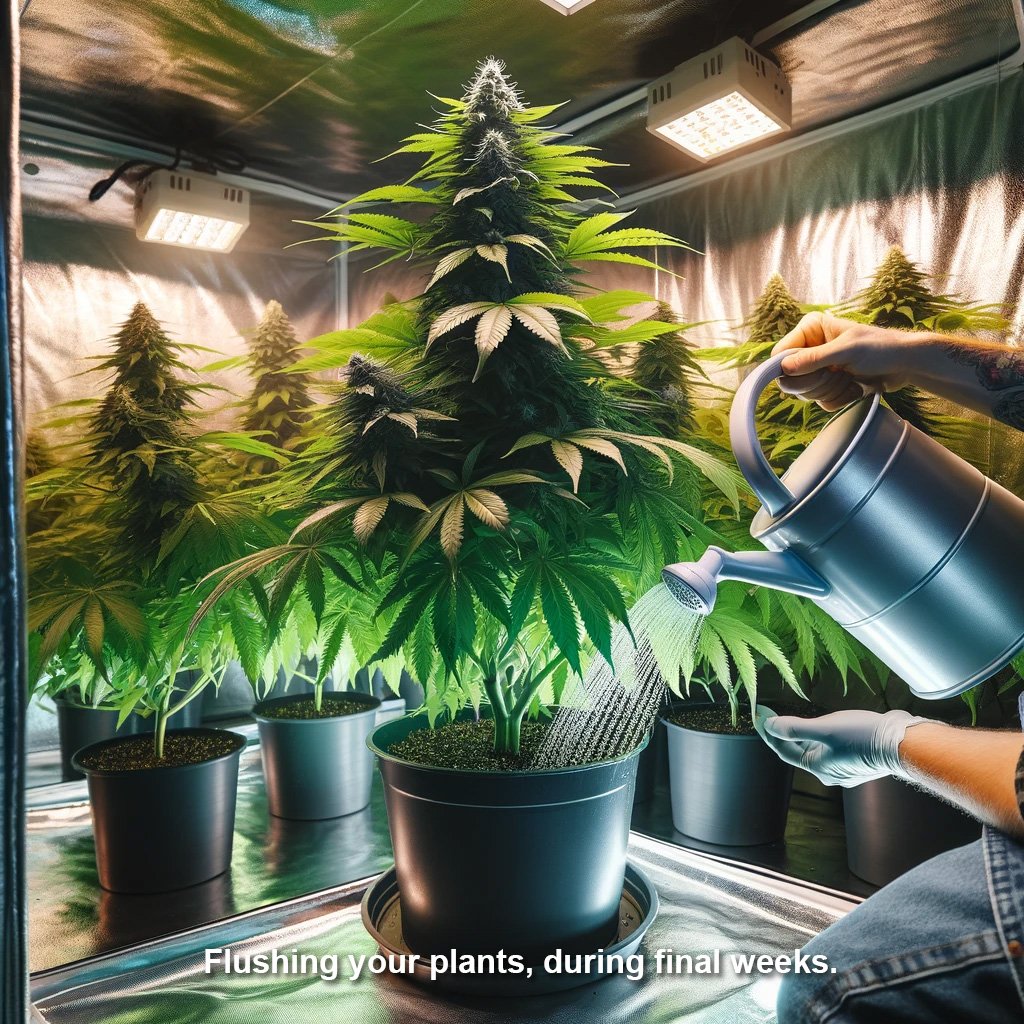
One highly controversial topic within the cannabis community is that of flushing. Many believe that flushing or offering only water (with no nutrients) for the last couple of weeks is the best way to ‘flush’ inorganic salts/nutrients out of your buds. Well-flushed buds are often considered to burn better, producing a smoother smoke and a whiter ash.
However, there are two issues with this theory:
• Firstly, it is actually the presence of inorganic (and the absence of residual carbon) that makes cannabis ash white.
• Secondly, there has been clear scientific evidence in recent years that flushing has no effect whatsoever on the levels of Nitrogen, Phosphorus or Potassium in the dry buds.
• Furthermore, flushed buds didn’t have superior THC or terpene levels. And of greatest interest is the fact that, in blind trials of flushed vs non-flushed buds, most people preferred the taste of non-flushed buds. Perhaps depriving your plants of nutrition prior to harvest compromises some aspects of plant biochemistry which adversely affects bud quality. Flushing certainly doesn’t wash minerals out of the plants and back into the grow medium.
If you want a deeper technical dive into the scientific study that claimed to totally debunk the value of flushing, then check out this article which also includes a video featuring the authors of the scientific study being interviewed about their findings.
| Related: |
| Cannabis flushing, the inconvenient truth |
How to evaluate the quality of cannabis beyond ash colour
The colour of the ash from your joints really can’t tell you too much about the quality of your weed. Instead, there are several other more important indicators, all of which you can control.
• For best results, Dutch Passion recommend growing with quality LED grow lights.
• Those that have struggled with the yo-yo effects of over/under-feeding mineral nutrients to their plants may find better results with slow-release organic nutrients. BioTabs are market leaders with a well-deserved reputation for making growing easier, especially for those with less cultivation. experience. Buy your BioTabs starter pack here.
• Use of large, aerated grow containers such as airpots or felt sacks are also highly recommended.
Appearance
With even a little experience it’s easy to discern the difference between magnificent buds and cheap bag weed. Badly grown weed may lack bud density and structure, perhaps through insufficient lighting and/or poor nutrient management. Get your grow conditions right and your plants, blooms and the buds on them will have a solid chunky, healthy appearance.
| Related: |
| How to grow cannabis indoors - expert tips |
Trichome density
The presence of a lavish, velvety thick coating of trichomes on the buds and sugar leaves is something all growers love to see. It’s an indication that the plant cultivation has been successful, with good levels of nutrition and lighting. With great trichome coverage should come a high cannabinoid content and a jam-packed terpene profile.
Aroma/flavour
Cannabis terpenes are the fragrant organic compounds responsible for the wild and rich array of delicious aromas. Without terpenes, cannabis aroma and taste would be bland and unappealing. All good cannabis growers pride themselves on great flavours and a rich aroma.
| Related: |
| How to increase terpene levels in your plants |
Potency
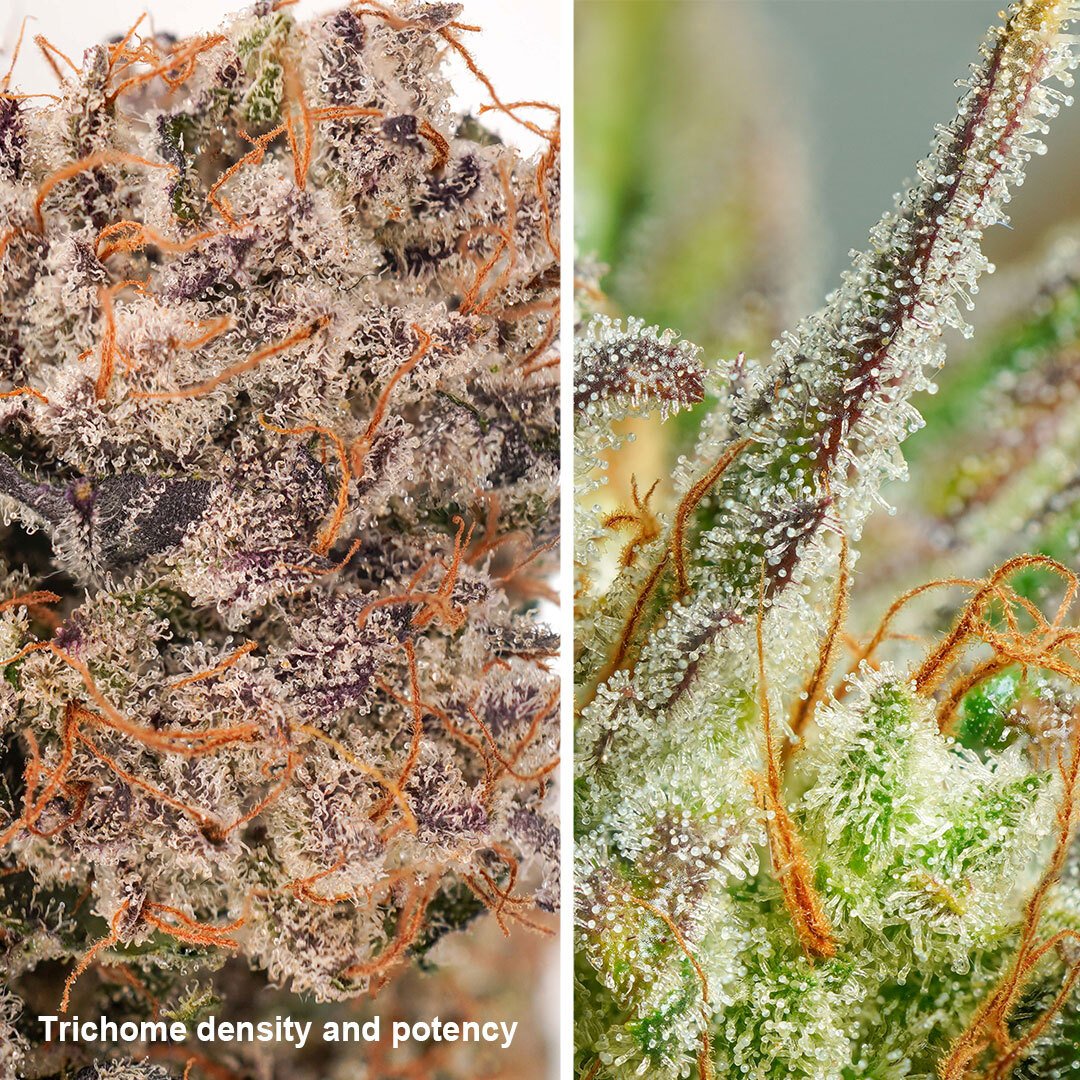
Of course, a winning taste and appearance is little if your cannabis seeds give rise to poor potency plants. Buy the best feminised seeds (or autoflower seeds) and combine that with LED grow lights and a controlled environment to produce the most potent buds that offer the ultimate satisfaction.
Key takeaways
Although controversial and counter-intuitive to many, the colour of the ash from your joints can tell you more about the efficiency of the combustion process in your joint than it can tell you about the quality of your weed.
Many growers also find it hard to accept that the process of cannabis flushing has raised some scientific eyebrows. After all, many old-school growers have always flushed their plants thinking that somehow it can mysteriously remove accumulated minerals from their plants. The theory was good, but the logic was missing.
Where did the flushed minerals go to? Minerals can’t evaporate via the plant leaves into the atmosphere. Neither can they reverse their way down the cannabis root system back into the soil.
Opponents of cannabis flushing believe that it serves no purpose other than to deprive plants of essential energy when they need it most in late bloom. That said, many of those that have flushed cannabis for years firmly believe in the process and find it hard to change.





























The Botanist
2024-06-17 16:11:17
Als professional, zeg maar gerust het neusje van de spreekwoordelijke zalm, ben ik van team niet spoelen. Ik kies er namelijk voor om meer waarde te hechten aan feiten, die voortkomen uit onafhankelijk wetenschappelijk onderzoek, dan aan ongefundeerde "verwachtingen". Omdat aan jezelf toegeven dat je het bij het verkeerde eind hebt voor iedereen moeilijk is, kan ik me echter best voorstellen dat mindere goden ervoor kiezen om vast te houden aan hun eigen overtuigingen. Welk voordeel er behaald zou moet worden uit het spoelen van het medium, is mij niet duidelijk. Voor zover bekend kleeft er namelijk geen voordeel aan het gebruik van nutriënten uit eigen weefsels (xyleem, floëem, bladeren etc.) ten opzichte van het gebruik van nutriënten die vers geassimileerd zijn uit de bodem; chemisch gezien zijn ze namelijk exact hetzelfde. Als je er voor kiest om te spoelen vanwege een nutrienten overschot in je groeimedium, doe je er niet alleen verstandiger aan om dit overschot te voorkomen, maar bereik je door het toevoegen van water juist het tegenovergestelde van het beoogde effect. Je brengt de concentraties dan namelijk terug in het functionele bereik, waardoor de plant ze beter kan opnemen. Een plant is niets meer of minder dan een biochemische machine. Iedere teler, ongeacht het gewas, zou er dan ook op gericht moeten zijn deze machine ten alle tijden zo hard mogelijk te laten werken. Als je op het einde van de kweek toch iets wil doen om de kwaliteit van je cannabis te optimaliseren kun je je tijd beter besteden aan het koel (20-22 graden) houden van je kweekomgeving, om zo te voorkomen dat je geliefde terpenen verdampen als sneeuw voor de zon.
Gerard
2024-06-12 18:59:03
Hoi, ik ben van team spoelen en ik moet zeggen dat ik met andere redenen en gedachten "mijn plant spoel". Waarom ik spoel is inderdaad voor de smaak, ik ervaar een minder scherpe/pittige smaak wanneer dit is gebeurt. Ik kan mij heel goed voorstellen bij de algemene gebruikersgroep de perceptie van goede wiet ligt in hoe hard hij in de keel prikkelt (veel thc > hoesten/prikkelen > kwaliteit). Ik verwacht niet dat de wiet in ene veel beter van kwaliteit is als gespoeld en zelfs een verminderde productie heeft gehad omdat het de laatste week(en) minder voeding heeft gehad, dat is mijn opoffering voor een zachtere smaak. Spoelen is ook een verkeerde beschrijving, zoals er wordt gezegd "Mineralen kunnen niet via de bladeren van de plant in de atmosfeer verdampen." En ik ben het hiermee eens als je op de plant doelt met spoelen, ik doel echter op de groei-medium met spoelen. Door samen met een enzym de zouten en mineralen uit het medium te spoelen zorg je ervoor dat er geen voeding meer is voor de plant en dat die zijn voorraden in de xylem en de bladeren moet gaan opgebruiken. Wanneer de plant tekenen afgeeft van een tekort in een mineraal, voordat je kan oogsten, ben je eigenlijk te vroeg geweest met het medium uit te spoelen. Toch ben ik van mening dat meeste kweken inderdaad zonder spoelen prima of zelfs beter uit de verf komen voor het algemene publiek. Een eventuele zachtere smaak is zelfs te bereiken door goed te curen.